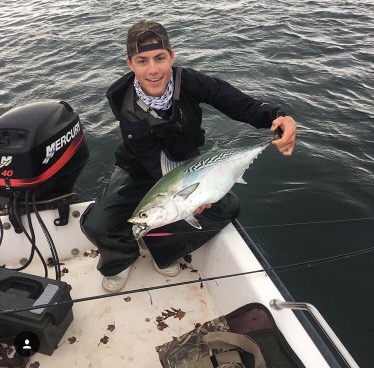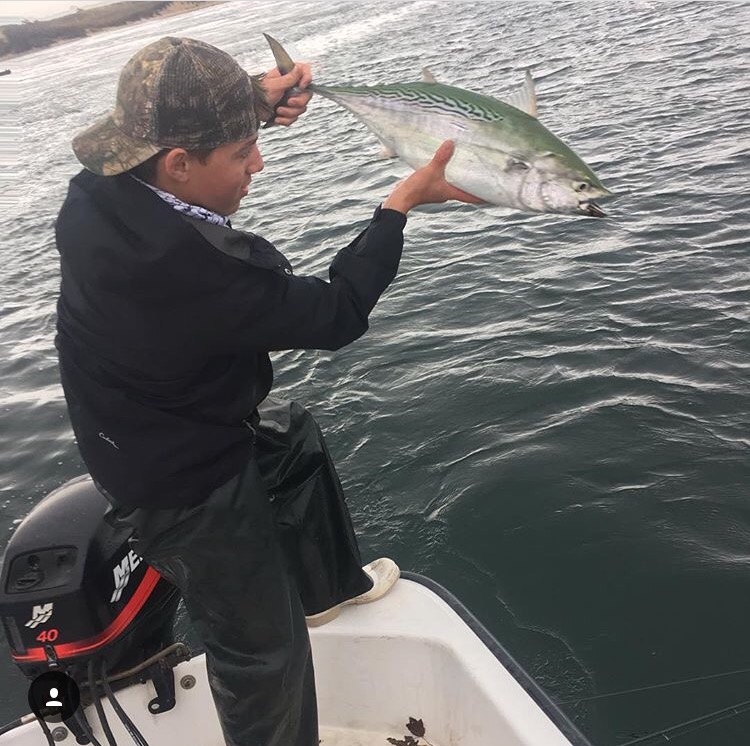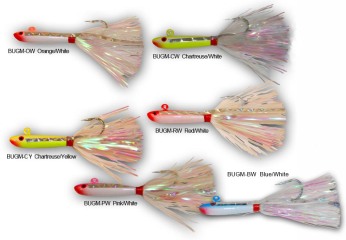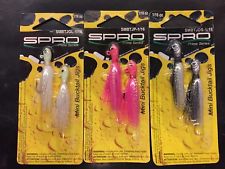I rushed out of the house, screen door slamming behind me and jumped in the car. Micheal sat next to me as we sped down the bumpy dirt road. I hopped out of the car as it came to a stop and banged down the metal ramp to our 13′ Whaler filled with leaves from its short stay under an oak tree in the driveway the day before. Bow line, stern and spring undone I hit reverse hard and sped out of the slip away to the Texaco to gas up before heading out for the morning.
It was early November and nearing the end of the false albacore season. 45 degrees and rainy, the conditions were as close to perfect as they were going to get that day for a duck hunt. Perfect for us, because that’s just what we planned to do, with a cast or two for fish on the side. The wind increasing from 10 to 20 knots cancelled our albie hunting plans, or so we thought.
Micheal, seeing my obvious impatience, jogged down the dock and tossed me the Remingtons and our rods. We topped off the tank and pushed off the splintering wood dock. Halfway out of the harbor, I turned around to see white water and green footballs coming out of the water. Albies! We hadn’t even organized the gear and I was lunging for the rods, nearly slipping on the slick, wet surface of the boat and the fall leaves. Rigged with Hogy Epoxy jigs, an albie classic that is known to catch in the toughest conditions, we sped toward the busting fish. Forty yards away, our spirits sank when the fish suddenly disappeared as if they were never even there, like ghosts.
It was late in the season there wasn’t a single boat in the harbor, which allowed us to grab the plastic piping that was attached to the drive on dock. With a hand on the piping to keep us steady, I turned around and there they were again! Huge albies jumping clear out of the water down by the red can. We let go of the piping and the ripping current spun us around like a leaf in the wind. I started the engine and we were off, racing towards them a second time. Once again, the albies went down, just out of casting range.
Even more dejected but encouraged by their fast reappearance, we idled slowly up to the piping again. Micheal called out to me as I was tying up a rope, “They’re up!” I dropped the dock line onto the piping and sped off once again. They were staying up. I was punching it. Salt spray sung our faces as we squinted to see the fish through the rain and whipping wind. Forty yards, still up. Twenty yards, still up. “NOW!” We both launched our lures into them, close enough to see the sandeels being busted all around the school. Both hunched over in what I call the “in the albies” pose, we watched two giants simultaneously launch themselves out of the water in pursuit of our skipping epoxy jigs. Micheal’s rod doubled over, tight! The whirring sound of the clickerless Cabo 40’s drag filled the air. With a final jump, one of the albies following my jig landed on it, engulfing it in its hard mouth. Doubled up!
The fish took off, ripping line from my Penn Spinfisher 3500. Our reels harmonizing and with us seemingly in heaven, I looked over at Micheal who was clearly getting nervous. His Cabo’s spool was dangerously low and his drag was getting very, very sticky even at the light pressure he was forced to keep it at. Our boat and the fish stayed in the (approximately) 4 knot current. It was apparent we soon needed to maneuver out of it into calm water and away from the wooden pilings.
Thankfully, the old Mercury 40 started up quickly and we putted into the calm water of the harbor and safety. Somehow, Micheal had managed to get his fish within 20 feet and we saw deep color. It was definitely not a 5 pounder. This was a big fish. The powerful tail of the fish propelled it on one last run into the current and his drag locked up. POP! The sound of defeat filled the air.
Micheal’s jaw dropped as the fish sped off, free. However, he quickly picked up the camera to video the end of my fight. Thankfully in the calm water, the circling fish below us slowly made its way to the surface. Twenty feet. Ten feet. I thought it was close enough and lunged… Just too far. I stood back up and pumped the rod twice more, reaching into the seemingly frigid water a final time. I felt the bumpy tail between my fingers and palm and gripped with all my strength, swinging the toad into the boat right next to the duck decoys.
We were right. These fish certainly weren’t 5 pounders! I lifted the green bolt up, its swirls dripping wet in the crisp November air. I took the epoxy jig out of its mouth. With one last glance, I looked at what I thought might be my last speedster of the season as Micheal snapped some pictures. With one push, the fish shot back into the water. High fives between us, we looked for the school once again. With no “ghosts” in sight, we turned around and headed to the duck spot. Cast and blast!





